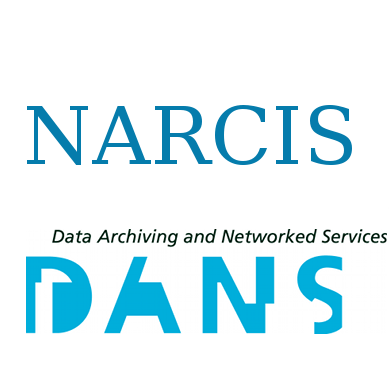Focal point
Location
National Academic Research and Collaborations Information System (NARCIS) is the main Dutch national portal for those looking for information about researchers and their work. NARCIS aggregates data from around 30 institutional repositories. Besides researchers, NARCIS is also used by students, journalists and people working in educational and government institutions as well as the business sector.
NARCIS provides access to scientific information, including (open access) publications from the repositories of all the Dutch universities, KNAW, NWO and a number of research institutes, datasets from some data archives as well as descriptions of research projects, researchers and research institutes.
This means that NARCIS cannot be used as an entry point to access complete overviews of publications of researchers (yet). However, there are more institutions that make all their scientific publications accessible via NARCIS. By doing so, it will become possible to create much more complete publication lists of researchers.
In 2004, the development of NARCIS started as a cooperation project of KNAW Research Information, NWO, VSNU and METIS, as part of the development of services within the DARE programme of SURFfoundation. This project resulted in the NARCIS portal, in which the DAREnet service was incorporated in January 2007. NARCIS has been part of DANS since 2011.
DANS - Data Archiving and Networked Services - is the Netherlands Institute for permanent access to digital research resources. DANS encourages researchers to make their digital research data and related outputs Findable, Accessible, Interoperable and Reusable.
Members:
Resources
Displaying 256 - 260 of 1863Topographic Signs: Important Context for a 3D Cadastre
Utilities, buildings and infrastructure digital representations are very important set of spatial data for quality and sustainable spatial management and development of community in general. Many countries are on the way of the establishment of the 3D cadastre. Existing 2D cadastral systems are able to make gradual transition to 3D cadastre, but for the implementation of real 3D cadastre in many countries it is necessary to change the regulations. A topographic sign or topographic symbol is representation of a topographic
Tropical landscapes in transition? : Widespread land-use change and measures to maintain forests, carbon stocks and biodiversity in North and East Kalimantan, Indonesia
The production of commodities such as palm oil and pulpwood is leading to large-scale land use change in the rural tropics to fulfil the demands of the increasing world population and overall living standard. On the one hand, such land use changes provide income to companies, smallholders and government actors. On the other hand, these can lead to land use conflicts and declines in forest cover, biodiversity, carbon stocks, and local food production.
La transformación neoliberal del mundo rural: procesos de concentración de la tierra y del capital y la intensificación de la precariedad del trabajo
markdownabstractThis article analyses the key pillars of the neoliberal policies as well as their impact on agrarian change on a world scale. Since the beginning of the 1980s various countries started to dismantle the developmentalist and protectionist state by intensifying their links with the world economy. The „imperative of the market‟ became the principal force of agrarian change and the state. The neoliberals argued that the developmentalist policies had an „urban bias‟ favouring industry and plundering agriculture.
Suitability analysis in a changing climate
Land suitability analysis is employed to evaluate the appropriateness of land for a particular purpose whilst integrating both qualitative and quantitative inputs, which can be continuous in nature. However, in agricultural modelling there is often a disregard of this contiguous aspect. Therefore, some parametric procedures for suitability analysis compartmentalise units into defined membership classes. This imposition of crisp boundaries neglects the continuous formations found throughout nature and overlooks differences and inherent uncertainties found in the modelling.
Quantifying and reducing uncertainty in land use change model projections : Case studies on the implications of increasing bioenergy demands
Land use change is a central issue in the sustainability debate, because of its impacts on e.g. climate change, water availability and quality, soil quality and erosion, and biodiversity. Continuing population growth, shifting diets towards higher meat consumption and increasing bioenergy demands call for the exploration of possibilities for sustainable land use change pathways with minimal negative impacts. Land use change models are tools that support such explorations by projecting the spatial dynamics of a predefined set of land uses over a given period.


